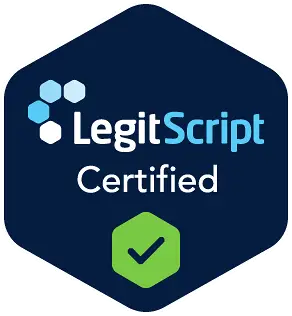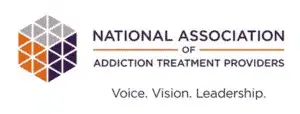Using hydrocodone during pregnancy can create a variety of risks. If you are pregnant or planning to be, it’s important to know the potential dangers of hydrocodone.
Hydrocodone is an opioid pain medication that is often used after surgeries to manage pain. The medication is often combined with non-opioid medicines like Tylenol or ibuprofen to make its pain-killing effects more potent.
Women who are pregnant may find themselves wondering if it is safe to use hydrocodone during pregnancy or while breastfeeding. Ultimately, using any kind of opioid while pregnant or breastfeeding should generally be avoided.
Can You Take Hydrocodone While Pregnant?
Most people who are pregnant should not use hydrocodone. However, the decision to take hydrocodone while pregnant will be different for everyone, and it should only be made after consulting with a doctor who is familiar with your health history.
This Season, Give Yourself the Gift of a Fresh Start.
Whether you are struggling with addiction, mental health or both, our expert team is here to guide you every step of the way. Don’t wait— reach out today to take the first step toward taking control of your life.
Hydrocodone is considered a category C medication. This means that either:
- Studies on animals have shown that taking the medicine while pregnant can harm the development of the baby, but there are no studies on humans.
- There are no animal or human studies about the safety of using the medicine during pregnancy.
Category C medications should generally be avoided while pregnant. However, they can be used when the mother’s physician believes that the benefits to the mother outweigh the risk to the child.
Risks of Taking Hydrocodone While Pregnant
There are several potential risks when using opioids like hydrocodone during pregnancy. Pills containing hydrocodone also often include other medicines, such as ibuprofen, that can have their own negative effects on the pregnancy.
Neonatal Abstinence Syndrome (NAS)
Neonatal abstinence syndrome (NAS) is a condition in which a developing fetus develops a dependence on a substance that the mother is using. This means that when the baby is born, it will begin to go through withdrawal because it no longer has access to a substance from the mother.
Infants with NAS spend the first week or so of their lives getting through withdrawal. Symptoms of NAS include:
- Tremors
- Constant, high-pitched crying
- Difficulty sleeping
- Seizures
- Stuffy nose
- Poor feeding
- Vomiting
- Diarrhea
- Sweating
The symptoms of NAS are unpleasant and potentially dangerous for a newborn, making it important to avoid using opioids during pregnancy if possible.
Birth Defects
Research into birth defects caused by opioids like hydrocodone is still ongoing. However, there are many potential birth defects that opioids are believed to increase the risk of or cause. The risk of birth defects caused by opioid use is highest in the first trimester, as this is when most of the important organs are initially formed.
Birth defects that are caused by or have an increased risk of occurring with the use of opioids like hydrocodone include:
- Congenital heart defects
- Spina bifida
- Central nervous system abnormalities
- Cleft lip and palate
- Gastroschisis
- Club foot
- Urinary tract abnormalities
It is very difficult to study the effects of opioid use because it is unethical to give medicines to a pregnant woman without understanding the potential effects. In addition, women using potentially harmful substances during pregnancy typically do not agree to participate in studies. As new research continues to emerge, more birth defects associated with opioid use are likely to be discovered.
Miscarriage and Stillbirth
While the full risks are not fully understood, using opioids like hydrocodone increases the risk of miscarriage and stillbirth. Miscarriage occurs when a developing fetus fails to survive the first 20 weeks of pregnancy, and stillbirth occurs when death occurs in the last 20 weeks of pregnancy. If stillbirth occurs, the mother will generally have to deliver the baby through induced labor or a C-section.
Poor Birth Outcomes
While miscarriage, stillbirth, NAS and birth defects are all potential problems when using opioids while pregnant, using hydrocodone can also lead to other poor birth outcomes. These include:
- Being born prematurely
- Not growing as well in the womb
- Having to stay in the hospital for longer after birth
- Increased likelihood of being rehospitalized within 30 days of birth
These poor birth outcomes are not necessarily harmful, but they do correlate with poor development and an increased risk of health problems.
Is It Safe To Quit Hydrocodone During Pregnancy?
Someone who is pregnant can safely quit taking hydrocodone, and they generally should quit opioids while pregnant if possible. Opioid withdrawal can still occur during pregnancy, but it is not usually dangerous to the developing baby. Before quitting opioids, however, it is always advisable to check with your doctor to make sure that this is the right choice for your particular situation. Because quitting as early in the pregnancy as possible is beneficial, it is important to take steps to quit as soon as you can.
Hydrocodone and Breastfeeding
There is some conflicting information on how safe it is to use hydrocodone while breastfeeding. Studies show that hydrocodone does cross into breast milk; however, there are indications that the amount of hydrocodone that actually ends up in breast milk is unlikely to be harmful when using normal doses of hydrocodone.
There is a risk that hydrocodone use while breastfeeding could result in the baby getting opioids through the breast milk. A mother who is using hydrocodone should always check with their doctor or the baby’s doctor prior to beginning breastfeeding.
Get Help for Hydrocodone Abuse in Colorado
Pregnancy can be an exciting and special time; however, concerns about an opioid addiction can cloud this special period of life. Not only can an opioid addiction negatively affect your pregnancy, but it can also affect your ability to provide your new child with the best life possible.
If you or your loved one is struggling with an opioid addiction, The Recovery Village at Palmer Lake is here to help. We have extensive experience helping people with hydrocodone addiction achieve lasting freedom through long-term recovery. Contact us today to learn more about hydrocodone addiction treatment options that can work well for your situation.









